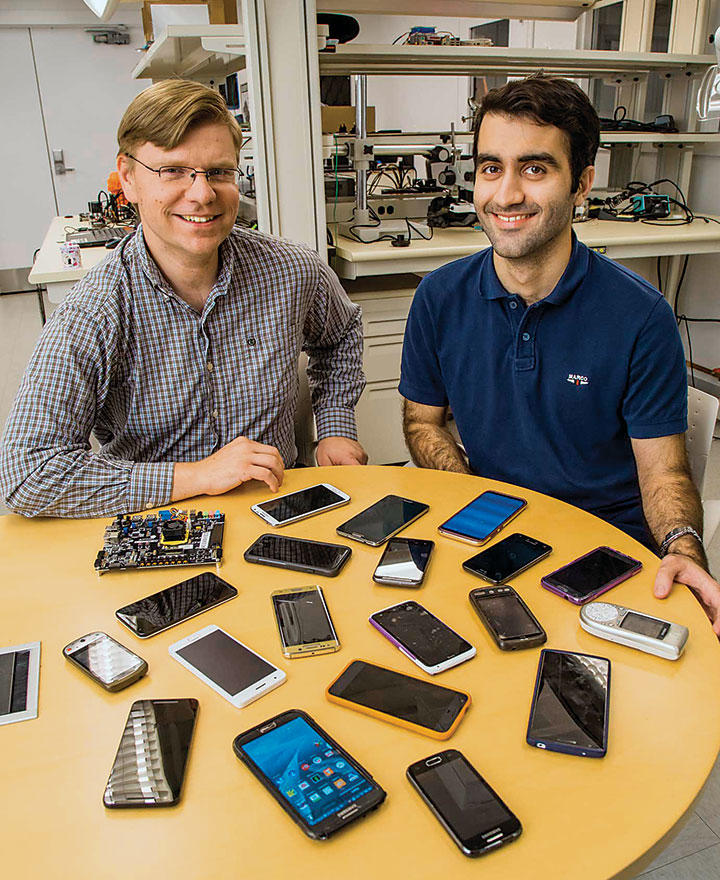Electrical Engineering: Cast-Off Smartphones Could Increase Internet Access, Reduce E-Waste
We rely on our mobile phones for everyday tasks, then after a few years, we throw them in a drawer and get new ones. Electrical engineering doctoral candidate Mohammad Shahrad contends we’re mothballing a lot of computing power that way, but he has a solution: combining discarded smartphones into a data server that can provide power back to the cloud — at half the price of today’s standard servers.
“These phones are already very strong for general computing workloads,” says Shahrad, adding that with new smartphone models released every year, older phones can be had cheaply. When it comes to cloud computing, providing the most computing power for the lowest cost could mean increased internet access for developing countries.
Nowadays the computing power inside older phones is by no means obsolete: “Newer phones have a better camera, a larger screen, but the processor is not getting much faster,” says Shahrad, who presented a paper on his idea for repurposed cellphones last July along with assistant professor of electrical engineering David Wentzlaff at the USENIX Workshop on “Hot Topics in Cloud Computing.”
Like many good ideas, this one came to Shahrad in the shower. He was thinking about a principle in computer science called Moore’s Law, which holds that the potential computing power of a computer chip doubles approximately every 18 months. Although that law has remained true for five decades, it recently has broken down as the number of transistors crammed on a chip is reaching a physical limit. Chips produced even a few years ago remain state of the art, creating an opening to utilize old chips for current data-processing needs.
Shahrad and Wentzlaff together designed server architecture for 84 linked cellphones housed in a metal chassis. Such a design could have environmental benefits: Since cellphones are made to maintain power all day using a small battery, they are extremely energy-efficient, Shahrad says, and they would use much less power than current servers. And then there is the added benefit of recycling: “Around 75 to 85 percent of the carbon footprint of a cellphone is in its production stage,” says Shahrad, who adds that extending the phones’ lifetimes would help offset the initial carbon cost of the device and cut down on e-waste.
Shahrad and Wentzlaff are exploring how they might obtain only the computational guts of a cellphone to put inside the chassis, rather than the whole phone, which would boost cost-efficiency. Currently, they are working on a prototype, and if they are successful, then all of our phones may eventually find new life, reborn among the clouds.












No responses yet